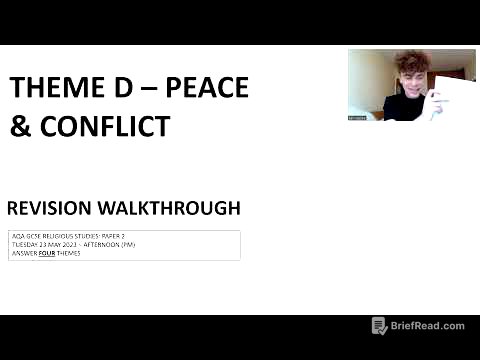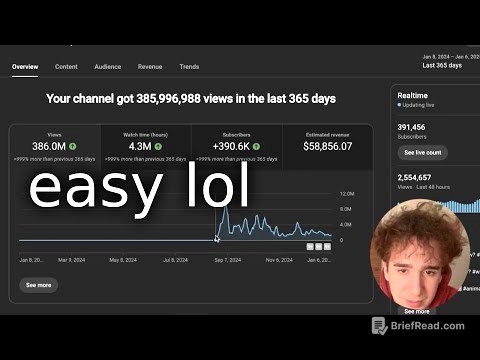TLDR;
This video by English Connection focuses on teaching viewers how to speak English more fluently by learning phrases and idioms through context. It highlights the benefits of learning English phrases from movie clips and provides a list of 200 useful phrases and idioms with Hindi translations to aid understanding. The video encourages viewers to practice these phrases to improve their English speaking skills.
- Learning phrases is a quick way to start speaking English.
- Understanding phrases in movie clips provides context.
- The video offers 200 phrases with Hindi translations for easy understanding.
Intro [0:00]
The video introduces the concept of learning English through phrases, emphasizing that understanding phrases in context, such as in movie clips, can significantly improve language acquisition. The presenter contrasts learning from movies, which takes time but provides context, with learning directly from the video, which offers a large number of phrases in a shorter time with Hindi translations for better comprehension. The video promises to teach 200 phrases.
Benefits of Learning English With Context [0:47]
The video explains the advantages of learning English phrases through context, particularly by watching movie clips. It illustrates how visual cues and situational understanding can help in grasping the meaning of phrases. The presenter uses the example of someone running late and apologizing to demonstrate how context aids comprehension. The inclusion of Hindi translations alongside English phrases is presented as a method to facilitate understanding and retention, catering to learners who benefit from both languages.
English Sentences for Your Practice [2:20]
This section presents a series of English phrases with their meanings and example scenarios for usage. Phrases include "It's not rocket science," "This is not fair," and "As soon as possible." The presenter explains when to use phrases like "Cat got your tongue," "I'll return the favor," and "Don't be a stranger." Practical examples are given to illustrate the appropriate context for each phrase, such as using "It's written all over your face" when someone is clearly lying or "I'm sick of it" when fed up with something.
Idioms to speak [6:50]
The presenter continues to share more phrases and idioms, providing context for their use. Examples include "If you insist," "What's eating you?" (when someone looks upset), and "I told you so." The video explains the meaning behind "Don't cry over spilled milk" and "Don't turn your back on me." The presenter also covers "It takes two to tango," "Let's call it a day," and "You are the apple of my eye."
Idioms and Phrases to speak [12:00]
The video continues with more idioms and phrases, such as "I'm dead tired today," "Get out of my sight," and "Well done, keep it up." The presenter explains when to use "Think before you speak," "What an idea," and "Could you please repeat that?" Phrases like "How dare you," "See you," and "Please keep quiet" are also covered. The section includes phrases for different situations, such as meeting someone ("Nice to meet you," "Pleased to meet you") and being on the way ("I am on the way").
Phrases for Your Practice [21:09]
This part of the video provides a rapid-fire list of additional phrases for everyday use. These include "It's none of your business," "No way," "It's out of order," "Not a chance," "It's now or never," and "Put yourself at ease." The presenter also covers phrases like "We are out of touch," "So what?" and "That's all." Questions and responses such as "What time?" "Could you explain?" "Is it clear?" and "What do you think?" are included.
English Connection [27:49]
The video concludes with final phrases and idioms, including "Let me help you." The presenter encourages viewers to write their favorite phrases in the comment section, share the video, and keep practicing.








